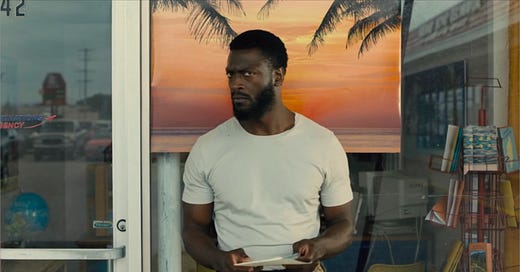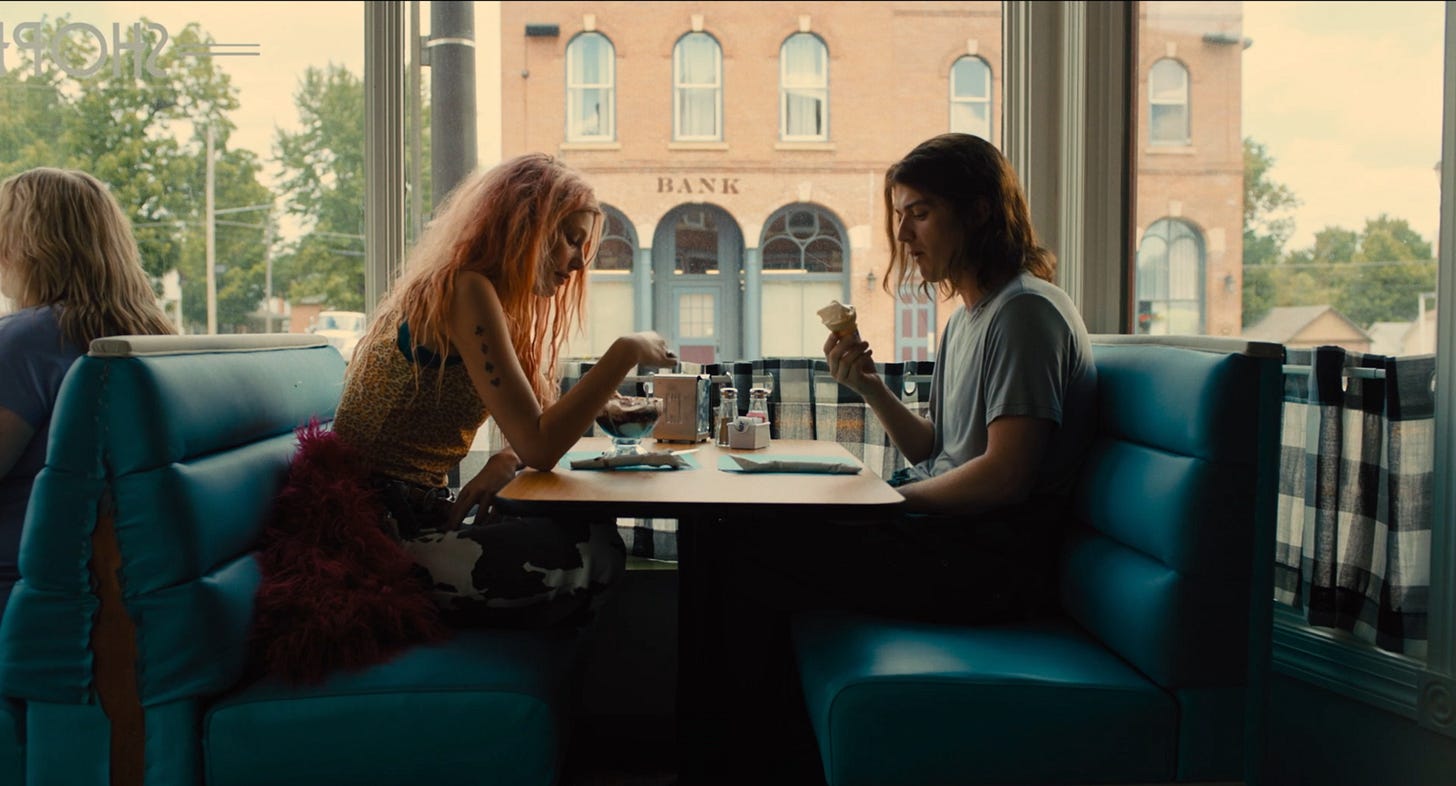note: “a heist romp with flashbacks has several twists” is no surprise, and we’re not revealing any twists. But as Marmalade is a recent release, please know images may come from any point in the film.
Prison is a Panopticon
Prison establishing scenes often involves a shot of an all-seeing watchtower looming over the prisoners; this scene from Marmalade goes smaller scale, but the framing of the ceiling vents, door, and platform evoke the look of eyes, nose, and mouth, still achieving that Big Brother Is Watching You vibe.
They Were There All Along Reveal
The way the scene plays through its masks reveal is one big metaphor for making good heists . . . and heist films!
show versions which don’t work while talking through various pros and cons
keep the masks you actually want on the edges of some shots
within a frame which seems to be doing one thing, follow a character’s attention and pull focus to the actual hero masks
then show them in various iterations of perfection in obscuring and revealing.

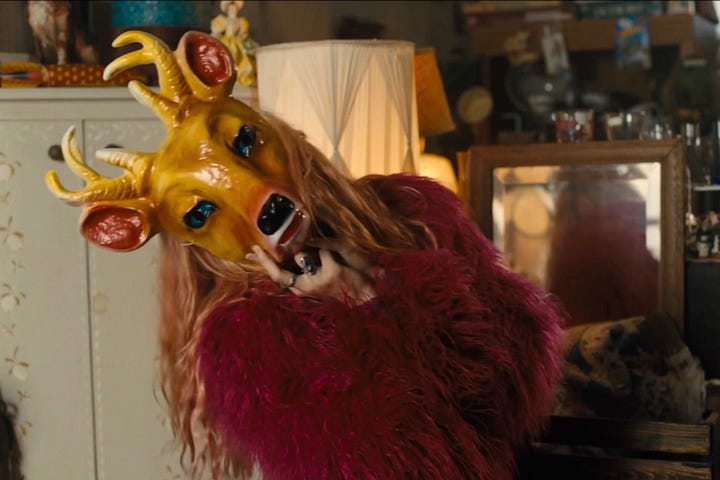


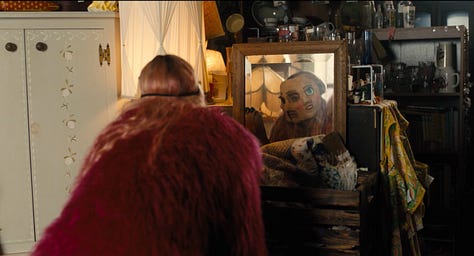
See, simple!
Fake Image of a Real Thing
The scene finishes on a poster which pictures a 2D representation of the ‘tropical getaway’ the scene references; it works because it has carefully set up the poster in every shot prior, and not just ‘cheated’ it in at the last moment.
Before Otis (Aldis Hodge) walks into the travel agency, we can see there’s something bright on the window.
The travel agency is decorated with stock photos, and manned by a guy in a Hawaiian shirt and puka necklace, and Otis is walks in past what is clearly a ‘two sided’ door poster of some generic island paradise.

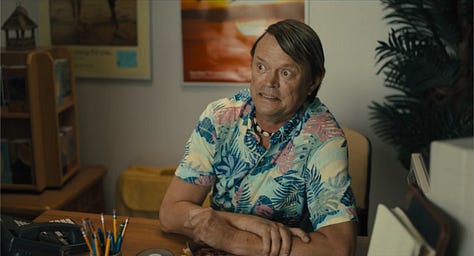

So by the time we get to the closeup of Otis against the tropical sunset, it feels like a foregone conclusion and not some too-convenient reveal.


Small People, Big World
A road trip adventure should, at some point, show the venturers in context of the road: here it’s winding, unpaved, crazy, and beautiful.
Classic Cafe Scene
Many films (and so many, many noirs) do a version of a Classic Cafe Chat where two people sit on either side of the table, and the scene often consists of a medium establisher, and closer shot-reverse-shot, with one or two closer variations pending how long the scene runs.

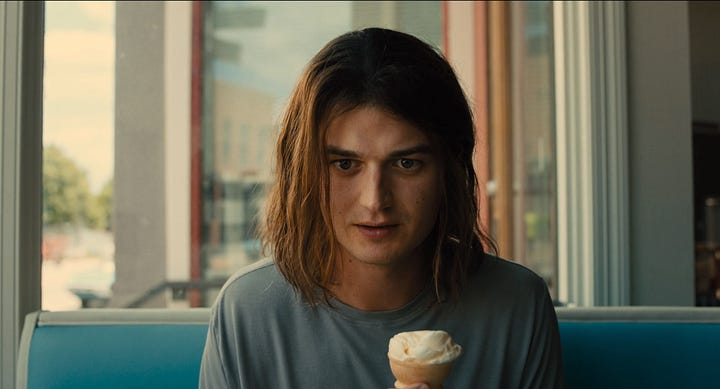
Marmalade sets its protagonists up in their booths, frames the bank they’re casing between them out the window, but instead of coffee or pancakes or the dinner special, they’re eating ice cream; a symbol of the childish abandon with which they’re approaching this whole bank robbery shindig.

